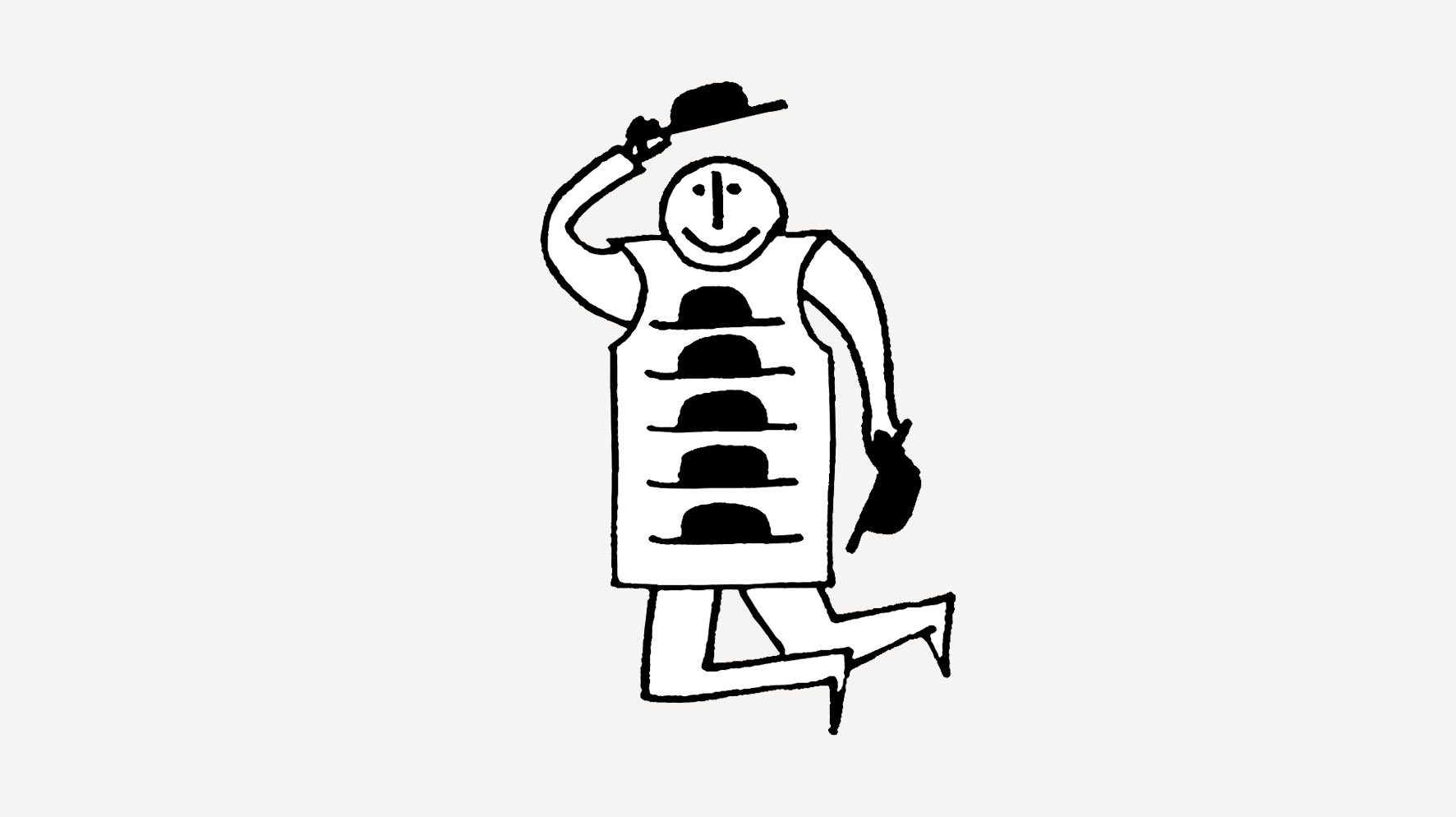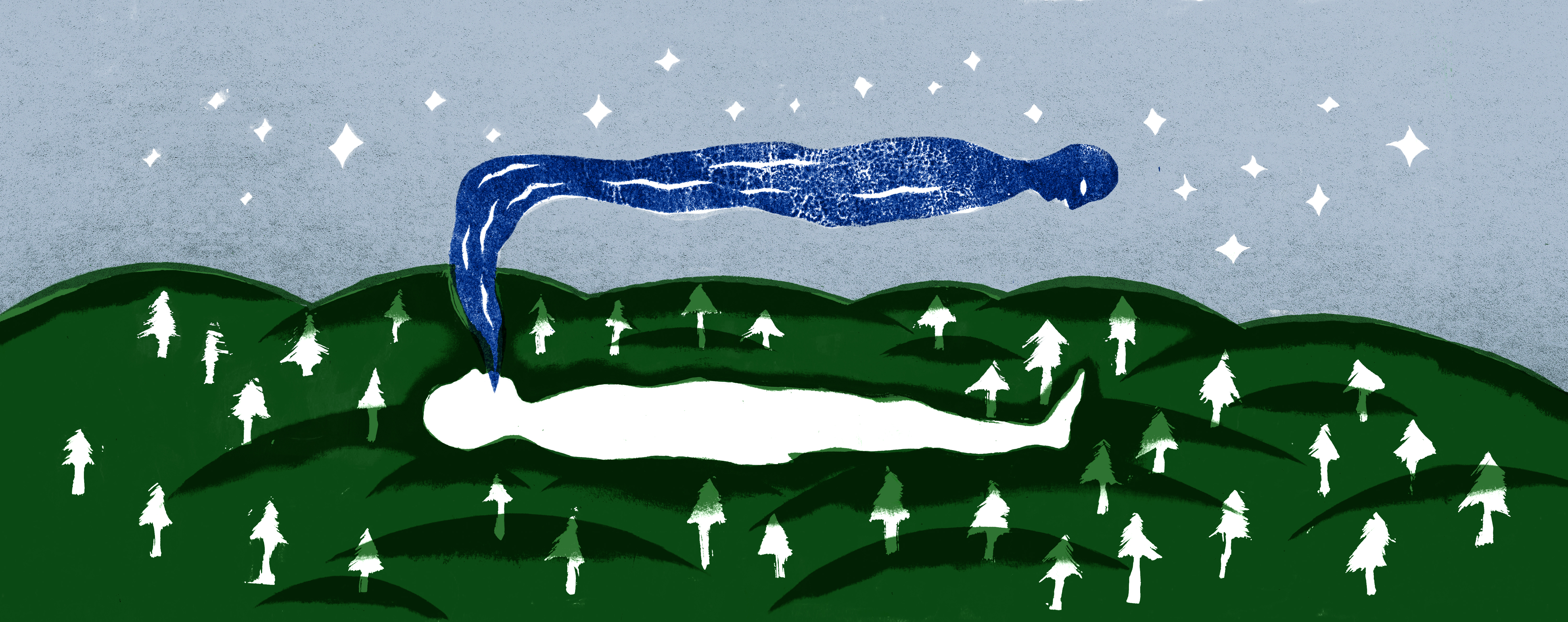
Zero-waste philosophy is great while we’re alive, but what should we do with ourselves once we die? In today’s world, so many of us die that we are running out of space for burying human remains. Funerary revolution seems unavoidable, and it’s already upon us.
Rationalists say that the only thing we can be sure of in life is our own death. This observation – seemingly so unshakeably reasonable – nowadays is worth reconsidering, for two reasons. First, humans have been trying to push the end of life further away since the day it began, and it keeps successfully renegotiating more extended deadlines for this unavoidable event. The numbers of immortalists in modern societies are going up – those people are deeply convinced that the end of life is not at all necessary, so they look for science-based strategies for eliminating death. Youth culture, enmeshed with the cult of youth, is the norm all over the globe. It makes Brazilian 13-year-olds get breast implants, young Korean men undergo painful face liftings, Polish 20-year-olds have fillers injected into their lips, irrevocably changing their facial features. Slightly greying managing directors and fathers of three young children run in marathons. Food concerns tweak the branding of their product lines to make them appear more pro-vitality. And there are plenty young product managers, who want to be successful at work without missing out on the fun, so they have medical workers visit them at home on Sunday mornings to administer IV vitamin drips and get them going. Some people follow the so-called ‘healthy lifestyle’ with ruthless self-discipline that no longer has much to do with either life or health. Modern life seems to be morphing into a game of constant restarting of the body, pushing the pawn back to square one, labelled ‘eternal youth’. There is no space left for death in this picture. Death is an unwelcome guest, the only one who resists endless revitalization.
The second reason to question the inevitability of death is the fact that it seems the only concept regarding our existence that remains so old-fashioned and never modified at all. Since the 19th-century Industrial Revolution, we have changed so much about our daily life; modern humans are children of intensive changes. It’s quite astonishing then that for over a century of revolutions, we have done nothing to modify what happens to us after we die. All the methods and ceremonies surrounding burials, as well as technologies of managing lifeless bodies, have remained exactly as they were. What’s the outcome? Today, funerals are the most outdated aspect of our existence on the planet. In no way or form do they resonate with the philosophy of sustained growth or environmental concerns. They have not been adapted to the problems caused by urban overpopulation and technological progress. And the facts are plain and simple: the highly urbanized world we live in no longer has enough space available to accommodate all those dead bodies. Today, the poetic epitaph Non omnis moriar sounds less like a testament of hope for eternal life and more like a symbol of the trouble we cause the Earth with our, well, rather persistent presence.
Possessive bodies
Every year, about 55 million people die – that’s 0.8% of the global population. The global population keeps growing, and in some regions of the world, such as Europe and the US, grows visibly older, which further increases the percentage of death. In 2100, the world is expected to be inhabited by nearly 11 billion people. Of course, the fast-approaching climate crisis might soon provide an abrupt and efficient answer to the overpopulation problem. But even if the rise in sudden and ruthless catastrophes killed most humans on the planet, the problem of accommodating their bodies would still remain unsolved.
For centuries, we have been dealing with dead bodies in a similar fashion. Most religions require the body to be buried in the ground, and many atheists choose the same procedure. Meanwhile, cemeteries are one of the most unecological and resource-costly spaces in the modern world – they are, in fact, vast storage yards for iron and wood (used for making coffins), concrete, and stone slabs. On top of that, graveyards are soaked with toxic cocktails of chemicals used for preserving bodies in morgues; also, fertilizers and pesticides for the flowers and lawns surrounding the graves. The most persuasive argument wielded by the cemetery critics is the fact that nowadays, necropoles are insatiable devourers of space. Living spaces in megacities are radically shrinking while becoming more and more expensive, making the buildings grow taller and apartments narrower. At the same time, our dearly departed enjoy their palatial resting quarters undisturbed, usually in the most prestigious parts of city centres. There are many late Polish citizens spending eternity in a tomb more spacious than an apartment in Hong Kong.
The fight for free space between the living and the dead is becoming more ruthless. As a result, death is struggling to find available areas to squeeze into in urban areas.
Despite growing numbers of deaths, cemeteries in most large metropoles don’t grow because they can’t; everything around them is already occupied. In New York, no new cemeteries have been built for half a century, and nobody has been buried closer than 86th Street in the heart of Manhattan. One of the city’s former mayors has recently bought out a vacated spot at an old cemetery, paid $20,000, and publicly called it a “good investment”. Buying a cemetery plot now often looks more like a real estate transaction. Some form of response to the burial crisis is an increase in building graveyards in the suburbs, with a short-term license for ‘renting’ the plot. After several years, the body goes into the mass grave, and the plot returns to the market. This radical model of ‘grave recycling’ seems virtually the only way to let us keep having burials in their traditional form. Cemeteries in some countries, such as the UK, US and Germany, have already stated that within several years from now, they will be full and won’t have any capacity left for new residents. The idea of grave recycling is still considered unseemly in many societies. Death and the rituals surrounding it are a very delicate subject, spiked with numerous conservative beliefs, which makes forced grave-vacating unacceptable. Even in the countries that allow grave recycling (in Poland, the plot is usually rented for 20 years; if the lease is not renewed, the grave can be confiscated and reused), it takes a long time before the grave is available for another tenant. Moreover, most families tend to keep renting family plots for many generations out of respect for their ancestors’ memory. In countries such as the UK, the outdated law (going back to Victorian times) does not allow reusing graves at all. Many tombs are so old that they have become historical monuments (often located in the most expensive parts of the city) and therefore cannot be adjusted or removed. Death may keep no calendar, but it sure has all its mortgage deeds in check.
The idea of grave-sharing – that is, burying several people in the same grave, whether it belongs to the family or not – is not a very popular option in the world yet. Even though many people spend their lives cooped up in spaces so despicably small they offend their health and dignity, almost everyone still hopes a luxurious, peaceful plot will await them once they pass away. Shared graves would affect many delicate issues of after-death cleanliness, untouchability, and the ritual aspect of death. People who exist in the culture of individualism have two universal wishes: they want to be buried on their own and near to the place where they lived. Those wishes are touching in their hopes of remaining in the world, but one cannot ignore the stubborn and greedy undertones that ring beneath. After all, our dead bodies are possessive, burdensome, and, lest we forget, quite costly for the living to accommodate.
A floating grave island
In the most densely populated cities, sentiments had to be put aside a long time ago. Hong Kong, Tokyo and Shanghai are now creating the only kind of necropoles possible: vertical, technologically-advanced columbaria. Vertical cemeteries – that is, skyscrapers where tombs occupy several dozen floors – are the new norm in developing countries. In Hong Kong, graveyards are built in the same manner as offices and luxury apartment houses: on steep, isolated slopes. They are airy and green, almost identical to regular habitable buildings. In this megacity, old-fashioned graves are even more unobtainable than apartments. A burial place can cost up to a $100,000 and, similarly to Tokyo or Mumbai, is more expensive than a living space for a small family.
Most Asians choose cremation, not so much for cultural reasons as for pragmatic ones. It’s no longer a free choice, though, but a necessity, as most necropoles nowadays require it. The shift is also noticeable in the US. In the 1960s, only 2% of all Americans wanted to be cremated after they died. Today, more than half of all bodies are being cremated. Analysts of the funerary business say this significant cultural shift makes for an optimistic prognosis, giving us hope that modern societies are open to more ecological and innovative approaches to burials.
The most technologically-advanced cemetery to date exists in Tokyo. From the outside, Ruriden looks like a small, traditional shrine. Inside, however, a swarm of LED lights fills the space with their glow. Every light illuminates one out of 2045 Buddha figurines, enclosed in glass boxes that store urns with ashes. All we need to do is swipe a card for our loved one’s urn to appear and change colour. This way of visiting the graves, which is an important and popular practice in many cultures, is becoming gradually more accepted. Singapore and Kuala Lumpur also boast some giant columbaria, where one can enter the data of their loved ones and have the urns with their remains automatically brought to an individual prayer room. It’s one of the most space-saving solutions available – this way, an area needed for just a hundred graves can fit up to 7000 urns.
Another cemetery of the future, gigantic in its capacity for afterlife residency slots, is Floating Eternity, a project of a graveyard island that would drift on the South China Sea. The aesthetically-pleasing construction would look like a floating park, with its green alleys and platforms, and could fit up to 370,000 urns with human ashes. Its routes would be pre-programmed, and the island would moor at certain harbours regularly, especially on the important holidays in the Chinese calendar. This way, the living could still visit their loved ones’ graves.
Another idea that already functions in the world is the cemetery skyscraper Santos in Brazil. At 32 floors, it’s the tallest necropolis in the world right now. It is located in an awe-inspiring mountainous landscape. It’s possible to visit the graves any time of day and night. The visitors can spend time in chapels, gardens, aviaries, and relax in a café. The reception takes in new bodies all the time; because of high temperatures in the region, burials must be conducted no later than 24 hours after death. Similar vertical graveyards with spaces for walks and meditation are being constructed in other parts of the world, such as Israel and Southeast Asia.
Further improvements are still coming up: more and more cemeteries are using augmented reality technologies. For example, an American necropolis in Arlington has created reservoirs of digital memories at the graves. Saved data can be retrieved and accessed via an app (each tomb is imprinted with a QR code). Such solutions allow us to learn more about the departed, see their pictures, and even hear their voice: a message left for the generations to come. An increasing number of cemeteries is also trying to introduce an online visit option for those who live too far to go to their loved ones’ graves in person. However, this solution requires creating multidimensional simulations.
Green funerals
The cemetery near Calgary in Canada boasts one of the most intriguing ways of using new technologies for funerary purposes. It’s one of the first graveyards to merge natural burials with GPS markings. What does it mean? The bodies are buried, without being chemically prepared, in the natural landscape, where they will decompose relatively quickly. There are no tombstones or grave slabs. The only way of marking the spots where our loved ones have been buried to rejoin the natural biomass is the GPS location.
A similar green solution for urbanized areas has been proposed by the team at Urban Death Project (now Recompose), offering natural burials without coffins, plastic foils or chemicals. Instead, the bodies would be buried in relatively shallow graves, wrapped in natural and biodegradable textiles, and would then undergo a process similar to composting. It’s an option for those who don’t necessarily believe in the afterlife and existence of an immortal soul, but appreciate their relationship to nature and view their own existence as part of the biological cycle. Therefore, they would like to contribute to other living creatures, giving their energy back to Earth. The originators of this idea hope that their future project would allow big-city dwellers to go for a walk in a park or coppice. There, the trees would give them some reprieve, but also the sense of identity and remembrance, having grown from the soil nurtured by the bodies of the people who used to live in the same space before us. This solution would have one more advantage: natural burials areas would become protected green spaces that could not be urbanized.
In a way, such solutions are already being tested in places where green areas are in short supply. For example, there are already cemeteries doubling as public parks. The locals can go there for picnics, walk their dogs, make barbecues and play football, as long as they make sure to respect the tombstones and any ceremonies that may be taking place there.
A brilliant metamorphosis
In the 21st century, there are plenty of architecture competitions that encourage and promote innovative approaches to the funerary business. Among many projects of the cemeteries of the future, a team of Death Lab alumni from Columbia University created a project that was met with exceptional acclaim. The team submitted their idea to the Cemetery Design Competition, organized by the University of Bath. The project they called Sylvan Constellation would be something not unlike a city park, continuously illuminated with the energy generated by decomposing human bodies. The light energy obtained from biodegradation would create glowing columns, emerging vertically from the ground like trees. Among the luminous shapes, aisles would take the visitors to terraces and small bridges, making for pleasant walks and providing space for prayer and reflection. Such a multi-level memory park could take in new bodies all the time, creating a space for the continuous symbolic circulation of life and death. The project has received numerous international awards and was praised for its respectful and subtle approach to handling human remains.
The same group of designers authored the project they called Constellation Park – a collection of luminous capsules installed underneath a Manhattan bridge. This project would also produce energy from decomposing bodies, this time in order to illuminate one of the most famous constructions in the city. This type of imaginative thinking is universally applauded for introducing death into the dynamic of urbanized spaces while maintaining the philosophy of sustainability and respecting the natural environment. And instead of trying to hide dying outside our awareness, it reminds us how fleeting life is. This way, the project helps create areas within cities that are infused with deeper meaning while answering the need most people have to be buried near the places where they lived. Therefore, it enables the dead to participate in co-creating the history and memory of their city.
One day, I’ll be a tree
A significant trend among various ideas on modern burials is the introduction of more sustainable and green solutions. One of the most important suggestions of recent years is planting trees for the deceased instead of giving them tombstones. An American company Urns Northwest designs ‘tree urns’: clay containers for human ashes, shaped like large seeds. The ashes are mixed with seeds of a tree chosen by the family, so a new plant can grow where the deceased person was buried. An alternative version of this idea is the Capsula Mundi burial pod. A container made of biodegradable materials is large enough to fit the body, curled in an embryo position. The capsule with the body is buried, and a tree will be planted right above it. The capsule, shaped like an egg, brings to mind the power of nature and becomes a kind of seed for a new life to start where another one had ended. All types of environmentally-friendly burials are becoming gradually more popular, although it’s likely going to take time before they become standard practice.
Cremation itself is not particularly green. First of all, urns take up quite a lot of space, too. And second, burning of the bodies require high energy usage. For example, the traditional cremation in India requires up to 600 kilograms of wood; wealthy families often use precious – and illegally obtained – types of wood, such as ebony or mahogany. Not to mention large emissions of carbon dioxide (in the US alone, cremations generate the same amount of CO2 as 41,000 cars) and mercury (cremation by necessity includes burning old-type tooth fillings. In the UK alone, cremations generate a staggering 15% of all mercury emissions).
The gradual shrinkage of cemetery space is a challenge that prompts some of the braver thinkers to consider this problem on a cosmic scale. The American company Celestis has been sending human remains into space for almost a quarter of a century now. Tiny capsules containing a pinch of human ashes can be expedited to Earth’s orbit or to the Moon. The latter costs several thousand dollars.
If we don’t feel like sending our loved ones so far away, we can also have them buried underwater; such a service is available in Florida. The Neptune Society created a vast artificial coral reef where ashes of over 100 people were placed; each capsule is accompanied by a plaque with the name, surname and the most important information about its resident.
A file never dies
Our data turn out to be remarkably long-lasting. According to analysts of the internet, Facebook has a chance to become the largest necropolis in the world – by 2100, almost a billion and a half of its users will pass away, and their profiles will turn into some kind of memorial, or perhaps secular shrines. Humanity is only beginning to grapple with the troublesome inheritance that is the necessary management of files and content that each of us leaves behind in the virtual world. All our data, passwords and access codes are a nightmare for our loved ones, trying to settle all the issues around finances and ownership that we leave behind when we die. But another, much more nuanced challenge remains unsolved: how to transfer our online lives to the realm of the past tense. How do we close down, transform or maintain the social media profiles of the dead? What do we do with all the pictures, videos and posts they uploaded? How do we manage access to those remains of the life that is no more?
All of these questions are very new and still unanswered, but not so distant from the problem of the bodies. Our virtual lives have their material support: monstrous serve spaces, located far away from the cities and the users’ eyes. We take up a lot of precious space, measured in cubic metres and in gigabytes of data, and the wealthier we are, the more we leave behind.
It seems that death, forgotten in our race for a longer and more exciting life, decided to remind us of its existence once again. It is like jet lag, catching up with us after a long flight; like a hangover after a wild party, like the ugly wings to the spectacle of vitality. The funerary crisis is a symptom of our biological and physical limitations, which we want to forget. And yet, they demand new answers, sophisticated and complex enough to match the multiplicity of forms we give to life on this planet. Today, most of us already live and die in the cities, and all prognoses show that the increasing density of human population in large urbanized areas will only grow over time.
Whether we want it or not, death remains very close to us, nestled right there, next to the present where we live, in a literal fight for the same space. Researchers who examine the role of death in modern culture and designers of new sepulchral spaces agree on one thing. They all believe the worst way of going forward would be trying to push cemeteries outside the areas of our everyday functioning and therefore trying to block out death from our view. Necropoles are the cornerstones of our identity and the very foundations of every metropolis, just like museums, universities and public service institutions. No city can exist without the dead.
Translated by Aga Zano









